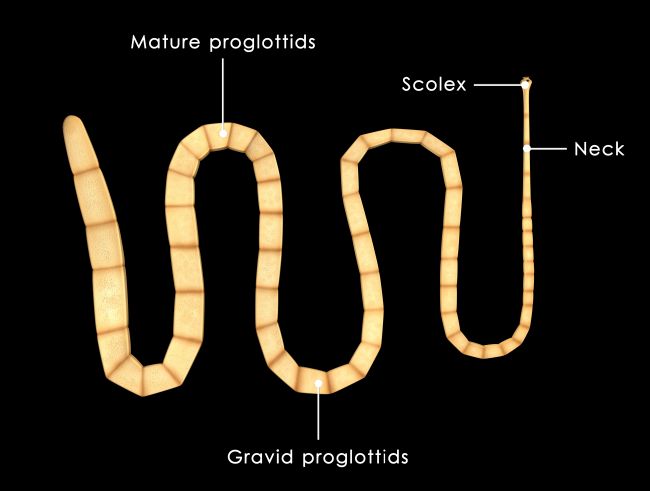
These long segmented worms grow much longer than other parasites, and contain reproductive organs in each section of their bodies. Because of this, tapeworms can be very uncomfortable for the host, whether cat, dog or human. Tapeworms absorb nutrients through their skin, attaching to the intestinal walls where they reside. Though there are several types of tapeworms, those that most often affect cats and dogs are: dipylidium caninum, taenia species, and echinococcus granulosus, etc. Fortunately, most of these tapeworms do not harm humans, however, it is wise to have a pet’s parasite infestation treated immediately.
Causes: Tapeworms can be contracted through flea infestations, whether the dog or cat has fleas on their own coat, or it can occur if they eat a rodent with the tapeworm larvae. Animals (particularly dogs) can also get tapeworms when they lick or come in contact with other infected animals’ feces or vomit. As much as animals may like to explore and smell the waste of other animals, watch that they don’t come too close or lick it at all, or they may become a host for worms themselves.
Symptoms: A pet is generally discovered to have tapeworms because small segments of the parasite will break off and appear in the feces or vomit of the ailing animal. The small white rice-like pieces of tapeworm will be present around the animal’s anus or in the fecal matter, and areas where your pet routinely sits. The dog or cat might seem uncomfortable, nervous or act as if they have stomach discomfort. Some animals may vomit when they have tapeworms, but this tends to be less common.
Treatments: Oral medication treatments for tapeworms prove to be the most thorough at ridding them from the animal’s body. Many vets recommend heartworm preventative medication for dogs that have taenia and dipylidium, as well as monthly de-worming treatments to ensure that all larvae is destroyed. De-worming treatments should also be coupled with regular anti-flea shampoos and collars to keep future contamination at bay.

